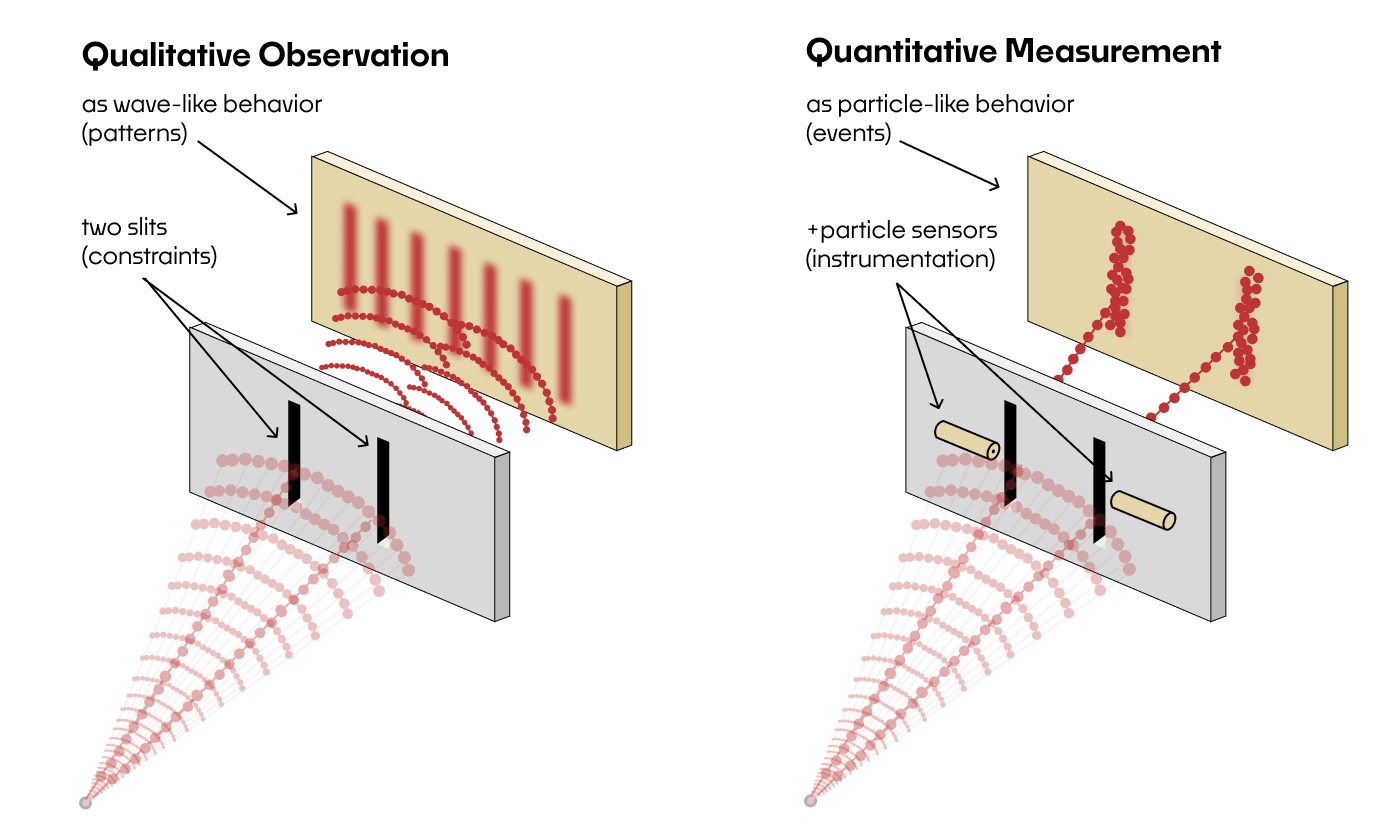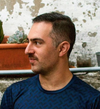To make good things that support other people’s activities, we start by understanding their context and behavior. We can describe that context by the interactions that produce actions or discrete events — as a wave or a particle.
Wave-Particle Duality
If we shoot electrons through a mask with two slits, the pattern observed on a backstop over time is wave-like. We find banding formed that is consistent with the interaction of waves. The electrons do not act as if they have moved through either slits as an individual particle.
However, if we instrument some detector to see and count individual particles that pass through the slits, our observed pattern turns particle-like. The wave effect is collapsed and we see two major bands of activity corresponding to the slits.
We can say that the electron acts “sometimes like a particle and sometimes like a wave.” Both cases are true, and the very act of instrumenting an experiment for observation changes what we see. (We're oversimplifying, of course, for the sake of metaphor. See notes from the Feynman Lecture for a rich explanation and the observation curves, both with (b) and without (c) a detector.)
Quant-Qual Entanglement
Electrons behave differently under different conditions of observation. So does user behavior in our products and services.

Our understanding of behavior is shaped by what and how we measure. We can characterize the waves — stories, journeys, forces — whose interactions describe motivation and pattern. We can instrument detection of particles — actions, flows, rates — whose events describe conversion and accumulation.
From a human perspective, we make decisions in product and design to improve the nature of the wave for those who are a part of it. To understand any waveform individually is a deep exploration: it is a function of interacting forces to be understood and potentially untangled. Interpreting qualitative waves of user behavior is careful work. Soundly done, it will help drive better choices by predicting future behavior.
From a business perspective, we make decisions in product and design to change the volume or location of particles. To understand particles at scale is a complicated operation: it is a function of understanding critical user activities, correctly instrumenting for observation, and reliably reporting what we find. Interpreting quantitative particles of user behavior is careful work. Soundly done, it will help drive better choices by predicting future behavior.
An unwavering faith in humanistic understanding pushes us toward a pure-wave view. A manic drive for scale and growth pushes us towards a pure-particle view. Each "side" misses the point. It's never either/or. If we care to understand what's happening now and the range of possibilities before us, it's both, at the same time: the qualitative context and quantitative events.
Waves and Particles
The notion of statistical significance is a trap when we work with waves: it doesn't make sense in this mode of work. Qualitative research asserts that some waves look and interact in a certain way, due to certain factors. There is no inherent claim of representativeness.
When we understand the factors that create certain wave interface patterns, we can begin to measure their presence in particle form. We can ask: how many of the particles we observe come from waves like that? We can ask: if we believe this is a valid pattern, what new areas of observation should we instrument to understand its scale?
It moves in the other direction, too. When we don't find particles where we expect them, or as they amass in unexpected places, we must ask questions of the unseen wave that produces them. What patterns of activity and interaction lead us to observe this, or find it absent?
Other things of note:
- The sketch in this newsletter is modeled after an image in Idealogical Reference Architecture (IRA): an epistemological interpretation of quantum mechanics, Worth Jr, Peter & Valdez, Juan & Pande, Seetesh (2022), found on ResearchGate.
- I enjoyed hearing Ryan Singer on Lenny's Podcast in a discussion of Shape Up. It's exciting to see this approach, inspired by Christopher Alexander's generative design process, begin to grow. (Each "shape" in Shape Up is essentially a small and custom-built Alexandrian pattern.)
- On April 15th, I gave a talk with Lisa Koeman at UXinsight. We turned our simple reflection on interviewing (Dave's post + Lisa's post) into a short talk. We felt good about it: we were able, in part, to show the audience some of what they were feeling already, but had never seen before.

Until next time—
This is Loops and Cycles, a mailing list exploring how we work together and make good things.


![Qual-Quant Entanglement [LC20]](/content/images/size/w100/2025/04/entaglement_v3-2.png)
